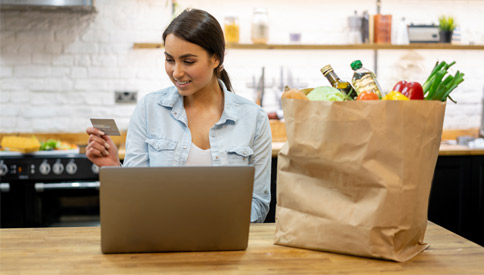7 Shopper Marketing Tactics To Win in The Borderless Retail Marketplace
By Jason Katz
“If anyone is looking to do things differently, break some rules or traditions that they felt were antiquated in today’s time, this is your chance.”
Sports media and marketing expert Tony Ponturo
We are living in truly unprecedented times, a time when technology has never so quickly and broadly impacted commerce as it does now.
Accelerated by the pandemic and consumers’ desire for online and virtual experiences, and powered by digital innovation, this new age of borderless retail comes with opportunities for brands to be more culturally relevant, expand the marketplace for their products and build a stronger relationship with key shoppers.
The most effective shopper marketing strategies are tapping into digital tactics to reach shoppers where they live now — somewhere along the blurring line of real life and digital life — and focus on collaboration with retailers to enhance the shopper experience. Here are seven to seriously consider:
1. Virtual experiences — The growth of virtual experiences was accelerating prior to the pandemic but has skyrocketed to meet the unmet desire for in-person experiences. From cooking classes to virtual, brands are connecting with shoppers online in new immersive ways.
Example: Apothic has featured a series of grownup story times with Sarah Michelle Geller to keep their brands top of mind during the pandemic and invite shoppers to choose their own Apothic journey.
2. Connected packaging and sampling — Connected packaging is the integration of digital experiences into product packaging via QR Codes, near field communications (NFC) and other methods to provide value to shoppers beyond the product itself.
Example: Ice°Bottle used NFC to bring to life its goal of eliminating single-use plastics by giving shoppers an easy way to learn more and get involved in saving the planet. Consumers tap their smartphones on the NFC tag embedded in the bottom of the Ice°Bottle to launch the experience.
3. Chatbots — Chatbots have grown in popularity across an array of product categories and services to effectively engage shoppers, customize product offerings and improve shopping experiences. Chatbots are being integrated with promotional pages on retailer websites, in-store point-of-sale materials and social media campaigns.
Example: The money management assistant Cleo reimagined the otherwise taxing experience of budgeting with AI chats designed to be personable and have a sense of humor to better connect with a younger target.
4. Frictionless commerce — Technology is blurring the lines between living and buying and shortening the path to purchase.
Example: Nike Air Max Graffiti Stores in São Paulo, Brazil were an outside-the-box example that combined street culture and commerce and demonstrated that brands can turn just about everything into a commerce store front. Nike’s new line of Air Max shoes could only be purchased by scanning a QR code on existing, but updated, murals by street artists.
5. Voice commerce — From frictionless recipes to booking appointments to cart reminders and reordering, hands-free is the new shopper engagement tactic.
Example: Tasty positions its Tasty Voice Skill as a handsfree virtual cooking coach that integrated a voice skill with frictionless add-all-ingredients option to the digital cart with a voice command.
6. Visual search/social shopping — Visual search allows shoppers to use a smartphone camera to view something (e.g. recipe, fashion item) in the real world within an app, then find similar items online. Prominent players include Google, Pinterest, Instagram and Snapchat, who have partnered with Amazon. Platforms can direct shoppers to more product information or link directly to retailers or shoppable units for seamless purchase. While relatively new, visual search is growing rapidly with the promise of inspiring impulse purchases and new trips.
Example: Snapchat has partnered with Amazon to allow shoppers to “See, Snap, Buy” to more effectively compete with social shopping offerings on Instagram and Pinterest. Shoppers can use Snapchat’s camera to scan a physical object or barcode, which brings up a card showing that item and similar ones along with their title, price, thumbnail image, average review score and Amazon Prime availability. When they tap on one, shoppers are sent to Amazon’s app or site to buy it.
7. Shoppable video — Shoppable videos, which allow shoppers to add items to their cart at the point of virtual engagement, are proliferating on social media and retail websites.
Example: Last fall, Walmart launched its shoppable video platform, Walmart Cookshop, which allows shoppers to choose their own adventure through recipe videos and add all ingredients to their shopping cart.
The rapidly evolving shopper marketing landscape and staying on top of all the advancements can be daunting. I offer three pieces of advice: Build a roadmap, don’t boil the ocean and make test-and-learns an imperative.







